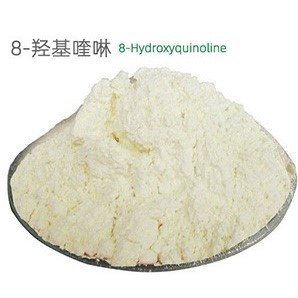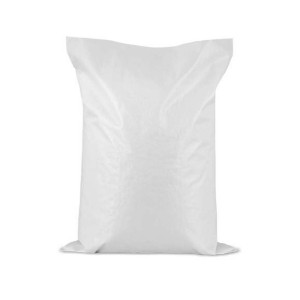
 Henan, China
Henan, China
 Henan, China
Henan, China
Send Email




8-Hydroxyquinoline / CAS 148-24-3
OVERVIEW
Uses
Packaging
| Pallets Packing | 20'FCL | 40'FCL | ||
| With | Without | With | Without | |
|
25 KG/Woven Bag
|
17 MT
|
15 MT
|
--
|
15 MT
|
Lead Time
Suspend Production
Max Capacity
1000 MT/Year
REQUEST A QUOTATION
SubmitDESCRIPTION
8-Hydroxyquinoline
Chemical properties of 8-hydroxyquinoline
8-hydroxyquinoline is a white or light yellow crystalline or crystalline powder. It is a white or light yellow crystalline or crystalline powder, insoluble in water and ether, soluble in ethanol, acetone, chloroform, benzene or dilute acid, and can sublimate. Less corrosive.
Application of 8-hydroxyquinoline
1. As a pharmaceutical intermediate, it is the raw material for the synthesis of kexielining, chloroiodoquinoline and paracetamol, as well as the intermediate of dyes and pesticides. This product is an intermediate of halogenated quinoline anti amebic drugs, including quiniodoform, chloroiodoquinoline, diioquinoline, etc. These drugs exert anti amebic effect by inhibiting intestinal symbiotic bacteria. They are effective for amebic dysentery and have no effect on extraintestinal amebic protozoa. It is reported abroad that this kind of drug can cause subacute spinal cord optic neuropathy, so it has been banned in Japan and the United States. The disease caused by diioquinoline is less common than that caused by chloroiodoquinoline. 8-hydroxyquinoline is also an intermediate of dyes and pesticides. Its sulfate and copper salt are excellent preservatives, disinfectants and anti mildew agents. This product is a complexometric titration indicator for chemical analysis.
2. As a complexing agent and extractant for precipitation and separation of metal ions, it can complex with a variety of metal ions. Standard for determination of heterocyclic nitrogen by organic microanalysis, organic synthesis. It is also an intermediate of dyes, pesticides and halogenated quinolines. Its sulfate and copper salt are excellent preservatives.
3. Adding epoxy resin adhesive can improve the bonding strength and heat aging resistance to metals (especially stainless steel), and the dosage is generally 0.5~3 phr. It is the intermediate of halogenated quinoline anti amebic drugs, as well as the intermediate of pesticides and dyes. It can be used as anti mildew agent, industrial preservative, stabilizer of polyester resin, phenolic resin and hydrogen peroxide, and also as complexometric titration indicator for chemical analysis.
4. 8-hydroxyquinoline is an intermediate of halogenated quinoline drugs, as well as dyes and pesticides. Its sulfate and copper salt are excellent preservatives, disinfectants and anti mildew agents. The maximum allowable content (mass fraction) in cosmetics is 0.3%. Sunscreen products and children's products under 3 years of age (such as talcum powder) are prohibited, and the product label should be marked "prohibited for children under 3 years of age". In the treatment of bacterial infected skin and bacterial eczema, the mass fraction of 8-hydroxyquinoline in lotion was 0.001%~0.02%. It is also used as disinfectant, antiseptic and bactericide, which has strong anti mold effect. The content (mass fraction) of 8-hydroxyquinoline potassium sulfate used in skin care cream and lotion is 0.05%~0.5%.
Storage and transportation of 8-hydroxyquinoline
Dry and ventilated place away from light
Hazard statement of 8-hydroxyquinoline
Hazard Code: Xn
Hazard class: 22
Typical Properties
Agrochemicals > Pesticide Intermediates
API & Intermediate > Synthetic Anti Infective Drugs
GET SAMPLE
Submit- Overview
- Descriptions
- Sample





























